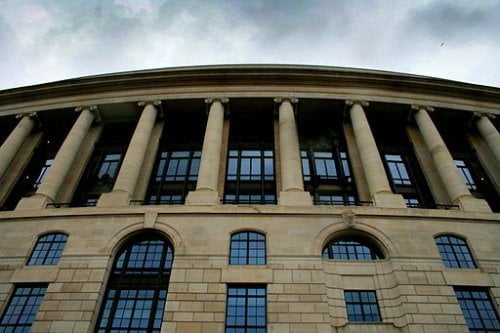Exploring the Branded Landscape of London Office Buildings

Following the recent furore over the suggestion of sponsored tube stations we ask; is a Virgin Euston or a Burberry of Bond Street station really that different from the branded London office buildings which have made up part of London’s landscape for decades – even centuries?
Branded London Office Buildings
We take a look at some of the most important branded London office buildings whose names we still use – quite happily – today.
Unilever House
The Grade II listed building at 100 Victoria Embankment was built back in 1929-1930, to create a new HQ for the Lever brothers’ soap manufactory – aka Unilever. Working with the architects, the company created a London office building which is an unusual fusion of neoclassical and art deco design.
This striking landmark is still an impressive sight on Victoria Embankment today – and is still home to Unilever Plc.

Oxo Tower
Originally built as a power station, the Oxo Tower on the South Bank acquired its new name in the 1920s when the Liebig Extract of Meat Company took over the building and remodelled it in art deco style.
The well-known Oxo design on the front of the London office building was a result of regulations against advertising on buildings which led the Liebig Extract of Meat company to use this more subtle means of raising brand awareness. Of course, it also gave the building its new name which has stuck ever since.
Today, the building is a mixed use development known as Oxo Tower Wharf – but everyone still calls it the Oxo Tower.

NatWest Tower
It might officially be known as Tower 42 but most people still call it the NatWest Tower – a legacy of its 1970s origins when it was built for the National Westminster Bank.
Back then, it was the first skyscraper in the City of London and a bold statement of the bank’s ambitions. In 1996, it was renamed the International Financial Tower as part of plans by NatWest to sell the building. Realising the lack of catchiness of International Financial Tower, its new owners renamed it Tower 42.
Today it provides office space for more than two dozen companies – including serviced office space. And while NatWest is no longer a tenant the old name is hard to forget.

Lloyd’s of London
While Lloyd’s is reportedly considering moving out of the building in 2021, it’s difficult to imagine this London office building at the heart of EC3 ever shaking off its associations with Lloyd’s. After all, while its unusual design has led to it being known as the inside-out building, most people still refer to it as Lloyd’s – proof indeed of the sticking power of this branded name.

Is branded always better?
Considering London’s strong connections with commerce, it’s perhaps natural that the cityscape should include a number of branded London office buildings. And, given that some of those buildings have become some of our best known and most highly prized landmarks, who can say that the same won’t apply to branded underground stations, given time?
Of course, it’s not all one way: the Swiss Re building will always be the Gherkin.
What do you think? Could sponsored tube stations be as well loved as London office buildings?
Image of Unilever House by Cnbrb via Wikimedia Commons.